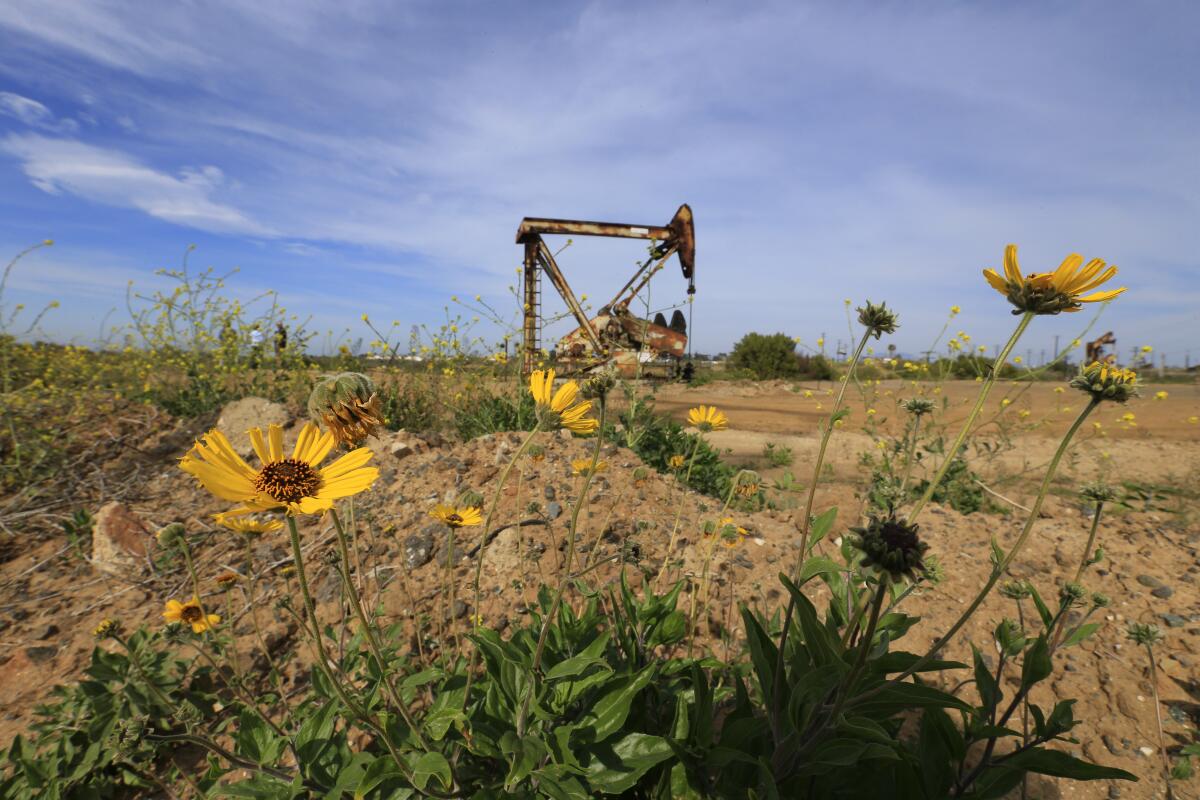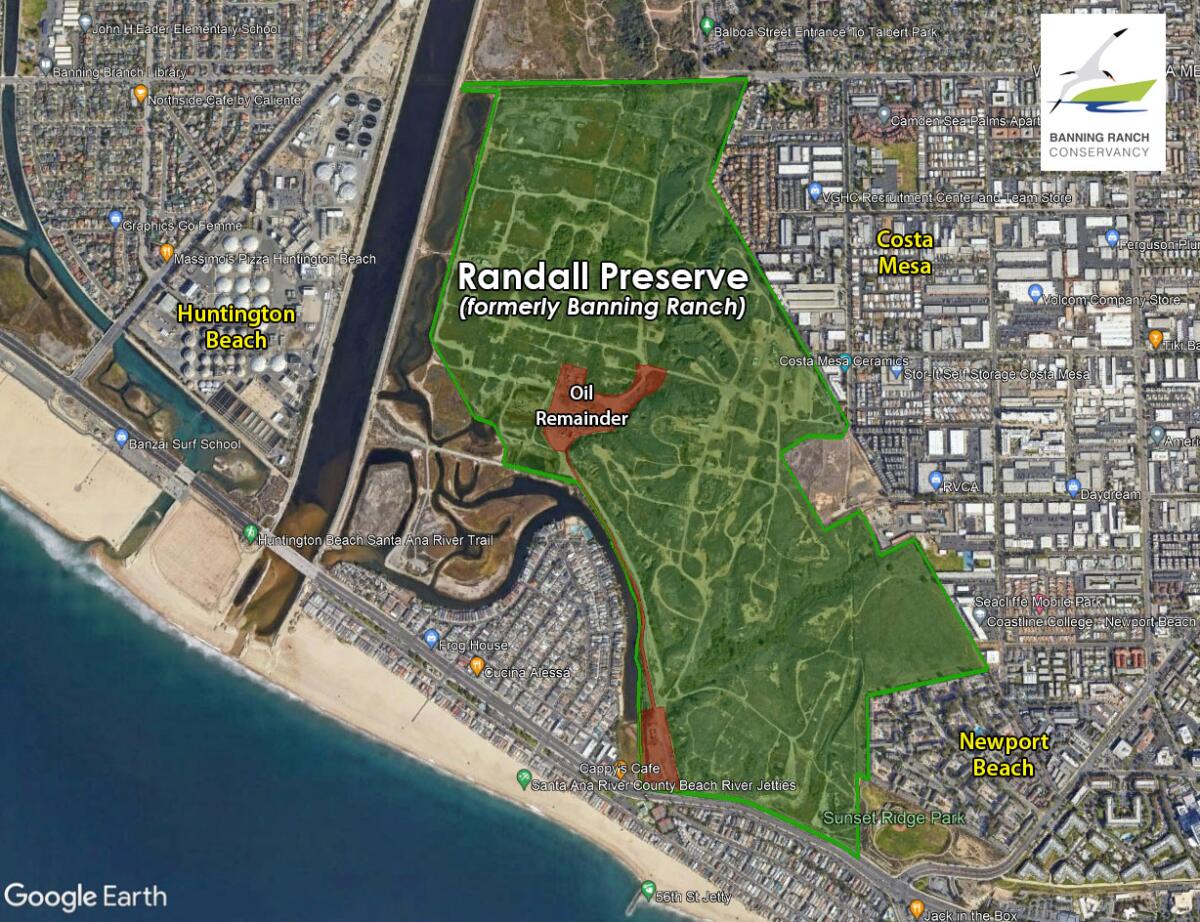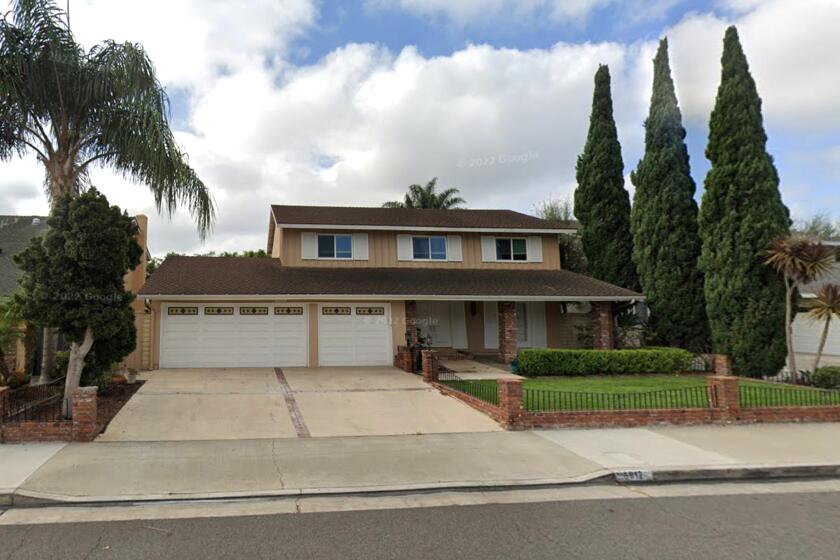First public meeting on the future of Randall Preserve draws packed house of curious community members

The meeting hall at Palm Harvest Church on Wilson Street, east of Placentia Avenue, hummed with conversations between dozens of friends and strangers from communities in Costa Mesa, Huntington Beach and Newport Beach who packed the space Monday evening. While many eyes were glued to Game 3 of the World Series, those assembled were fixated on a different win for Southern California: the conversion of a nearly 400-acre former oil field into one of the largest nature preserves in Orange County.
The meeting was a workshop and panel discussion designed to teach the public how they can participate in the planning of the Frank and Joan Randall Preserve. It was the first public event organized by the Coastal Corridor Alliance, one of the organizations that helped rally the community around the creation of the nature preserve. It was also a major milestone in what has been a 25-year effort, the alliance’s president, Terry Welsh said.
“We still can’t get over the fact that we saved the area, that the community as a whole saved the area,” Welsh told the Daily Pilot in a telephone interview Tuesday. “It’s such a joy that we haven’t come down from yet. Last night what you saw was people showing up... there’s interest in the community. People really want to see this thing succeed.”

An ambitious goal realized
The process of securing Randall Preserve began in 1999 with the creation of a Sierra Club task force intent on saving at least part of the former oil field. The 387-acre parcel was known as Banning Ranch and sought after by developers hoping to capitalize on what had been one of the last remaining areas of undeveloped real estate in coastal Orange County.
In around 2006, a proposal from a development group called Newport Banning Ranch to build almost 1,400 homes, a hotel and retail space on the land started gaining traction, Welsh said. After years of back-and-forth and revisions that whittled the scope of the plan down to about 900 units, the Newport Beach City Council approved an environmental impact report for the project, clearing one of the last hurdles in the way of its construction.
Meanwhile, Welsh and members of the task force created the Banning Ranch Conservancy, an independent nonprofit working to preserve the undeveloped space. That group, which eventually became the Coastal Corridor Alliance, filed a lawsuit against Newport Beach challenging the environmental report. It won a unanimous decision from the California Supreme Court in 2017.
Additionally, plans for construction were rejected by the California Coastal Commission in 2016. During the course of a roughly nine-hour hearing, commissioners noted a disconnect between developers and members of the community.
“Between the Coastal Commission denial and the state Supreme Court decision, the owners and developers were kind of set back to square one,” Welsh said. “And at that point, we didn’t know what they were going to do. They could have come back with a smaller project. The Coastal Commission never said you cannot build on this property, you just couldn’t build something as big [as the plans called for].”
On the heels of those two victories for the conservation effort, the nonprofit Trust for Public Land entered negotiations with the owners of Banning Ranch about selling the property to those who wanted to turn it into a nature preserve. Their asking price was $97 million.
Coming up with all of that money was daunting, Welsh said. But a pivotal $50-million contribution from the new nature preserve’s namesakes, Frank and Joan Randall, helped make it possible. The Trust for Public land was able to secure the remaining $47 million with grants and funding from a variety of different organizations.
“There was this huge big question mark about where we could ever get the money to buy this property,” Welsh said. “... That just changed everything. All of a sudden the discussion picked up momentum, agencies became interested in helping out. Frank and Joan’s donation is the single most important thing that has helped this effort. We should always be grateful for them, and I’m happy the site will be named after them. They should always be remembered for their good deed.”

Setting the foundations of a dream come true
The Trust of Public Land completed the purchase of Banning Ranch in December 2022. The property was subsequently handed over to the Mountains Recreation and Conservation Authority, a public agency that manages local public open spaces. The agency is the current leaseholder of the property and will take on the Frank and Joan Randall Preserve’s development and maintenance in partnership with the Coastal Corridor Alliance and other organizations.
The trust is working with state, county and city officials as well as a variety of nonprofits and the public to shape the future of the preserve. At Monday’s workshop, people learned about how they can provide input on the process and got advice on how to submit more helpful comments.
Those interested in the process can submit early comments and questions to planners via the Coastal Corridor Alliance’s website. Another workshop will hosted at a later date.
Conservationists are simultaneously writing four plans outlining how the public will access the space, the best ways to sustain the delicate habitats it encompasses, strategies to mitigate the effects of climate change and safeguard to protect artifacts and locations considered sacred to the Tongva and Acjachemen communities who originally inhabited the area. They hope to have drafts available for the members of the public to view and weigh in on by April.
“We’re all very excited about it because we view it as more outdoor space, and more opportunity for people who live in our community to get outside and have a park,” Matt Kliszewski of the Newport Shores Home Owners Assn. told the Daily Pilot after Monday’s meeting. “So it’s gonna be great, just, a lot of questions about when and how.”
The timeline of the park’s development and how soon it might open were the most popular topics among attendees. Maintenance and cleanup of the preserve were also raised by local residents worried about the potential of trash left behind by visitors once the preserve becomes available to the public. Others expressed concern about the possibility of homeless people creating encampments in the area.
The decommissioning of oil rigs and other equipment as well as the removal of contaminants leftover from drilling in Banning Ranch are other matters that must be dealt with before the park opens. Fortunately for conservationists, the seller of the property took on responsibility for those tasks and is covering the cost of cleanup. That process could take about another year, and appears to be moving forward on schedule, Welsh said.
But despite a number of questions and concerns that still need to be hashed out, the former Banning Ranch’s future as Orange County’s newest nature preserve now seems all but certain.
“I honestly assumed it was going to be built on,” Lesley Hill, the Environmental Mitigation Program manager for Orange County Transit Authority and a lifelong Orange County resident, said after Monday’s meeting. “Living in Southern California and Orange County, that’s just what happens.
“Here we have this amazing property that’s not going anywhere,” she continued. “I love it. Now I have three kids, and someday hopefully soon I’ll be able to go on the property with them. And if my kids stay in the area they’ll be able to go on the property with their kids. To me that’s a legacy.”

A huge, contiguous boon for struggling species and habitats
The space once known as Banning Ranch features roughly 100 acres of marshes, mudflats and riparian scrub and 67 acres of coastal sage scrub. It’s home to burrowing owls, fairy shrimp, peregrine falcons and other species sensitive to the effects of human development on the environment.
The planned 387-acre preserve will expand an existing swath of green space that includes neighboring Talbert and Fairview parks. The inclusion of the Frank and Joan Randall Preserve will mean a contiguous 1,000-acre space in coastal Orange County will be set aside for future generations to enjoy and learn from, Welsh said.
“The larger the area, the more likely the ecosystem will survive,” Welsh said. “It doesn’t survive very well when it gets broken into little fragments. But when you have 1,000 acres of contiguous open space, there’s a chance that the animals out there can reach an equilibrium and survive.”

All the latest on Orange County from Orange County.
Get our free TimesOC newsletter.
You may occasionally receive promotional content from the Daily Pilot.




